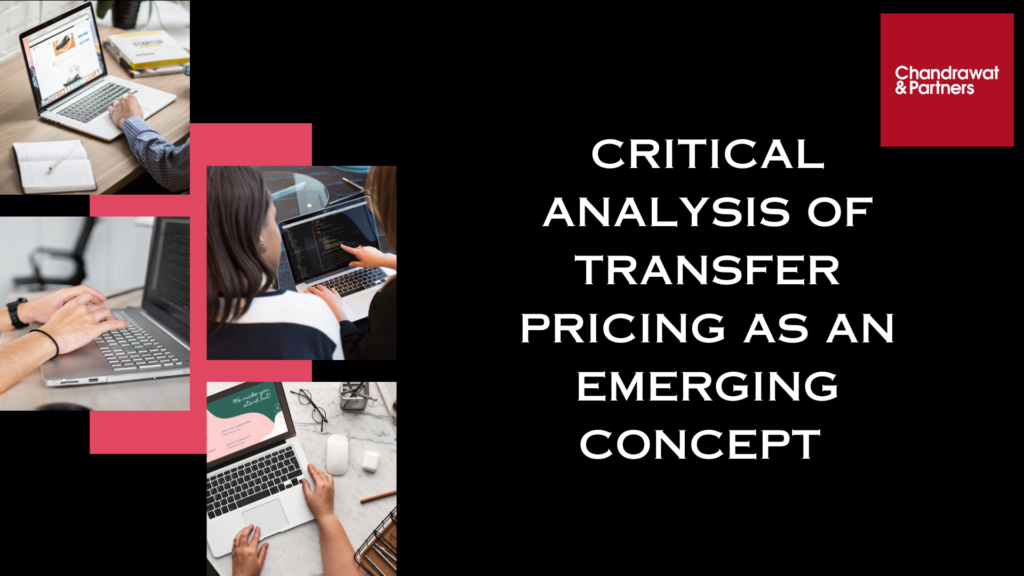Edit Content
Edit Content
Edit Content

With the rapid rate at which the technology, transportation and communication have witnessed advancements that it has paved the way for the large number of multinational enterprises or corporations or companies that has the access to the global market as to place their enterprises and carry on their activities. In reality, a considerable portion of global trade today consists of international transfers of commodities and services, capital, and intangible within a multinational enterprise group; these transfers are known as “intragroup” transactions. The pricing that is associated with these kinds of transactions is known as transfer pricing.
Transfer pricing as a concept can be understood as the price that is related to the goods, services and technology between the associated entities that are located at different places or countries where one can be in a high taxed state and the other can be in low taxed state. The prices that are charged for such transactions between the associated entities are validated with a really strong economic reasoning that being the ability of the parent company to assess and evaluate the performance of the individual entities.
The transactions that involve transfer pricing are often known as controlled transactions, reason being that such transactions happen in a controlled environment that is between two or more associated enterprises of the same multinational enterprise group and uncontrolled transactions are quite opposite of such transactions, that is these transactions usually take place between the companies that are not associated and are assumed to be working independently in reaching terms for any such transactions.
Price Mechanism in such transactions is apparently determined by the parent company because of the reason that the parent company wants to derive maximum economic benefits and comparative tax advantage and it is only possible because of the differential tax regulation and economies of scale of operation in different territories or states or nations.
Each territory has their own taxation system and laws which becomes the reason for rate variation at global levels, hence multinational corporations or enterprises are encouraged by such disparities among tax rates, to shift their earnings from high-tax jurisdictions to the jurisdictions that has the low tax rate or no tax at all. To attain the profit shifting, a holding company or the parent company may sell its product or services to its subsidiary company.
The arm’s length price principle is employed which suggests that the transfer pricing for the associated entities in a controlled transactions should be similar to the pricing for the unrelated or independent entities in the uncontrolled transactions.
There are majorly five methods through which transfer pricing is carried on are as follows:
There is always an attempt to increase the profits of the parent company by reducing tax liability by the way of storin funds or by transferring the earnings into related entities situated in the jurisdictions known as tax havens. The way these transactions take place in the multinational enterprise group is determined by a combination of market and group-driven pressures or forces that can differ from open market circumstances that operate between independent firms.
As a result, a huge and growing number of international transactions are no longer dominated just by market forces, but by forces motivated by the common interests of group members. Transfer pricing should be considered as the method of the cross-border transaction or a way to ease the doing and setting up of the business and should not be seen as the way or measure to escape the tax liability by the multinational enterprises.
For more information or queries, please email us at
[email protected]

Managing Partner
Copyright © Chandrawat & Partners. All Rights Reserved.
Copyright © Chandrawat & Partners. All Rights Reserved.

Chandrawat & Partners stands as a dynamic and rapidly expanding full-service firm, specializing in the delivery of exceptional professional and corporate services to a diverse clientele, both foreign and local. We proudly represent companies and individuals across a wide spectrum of sectors through distinct entities established in various countries worldwide.
ASIA
AFRICA
EUROPE
NORTH AMERICA
SOUTH AMERICA
OCEANIA
Chandrawat & Partners uses cookies to run our site and improve its usability.
By using our site you agree to our use of Cookies.